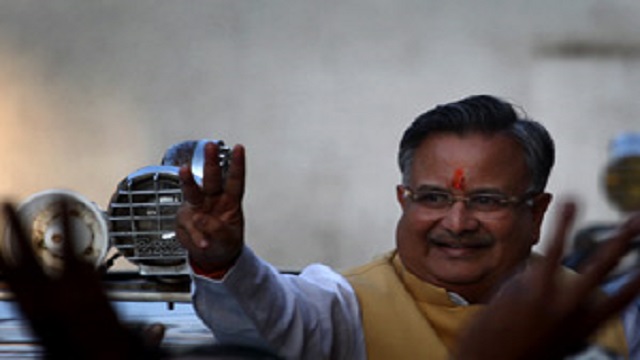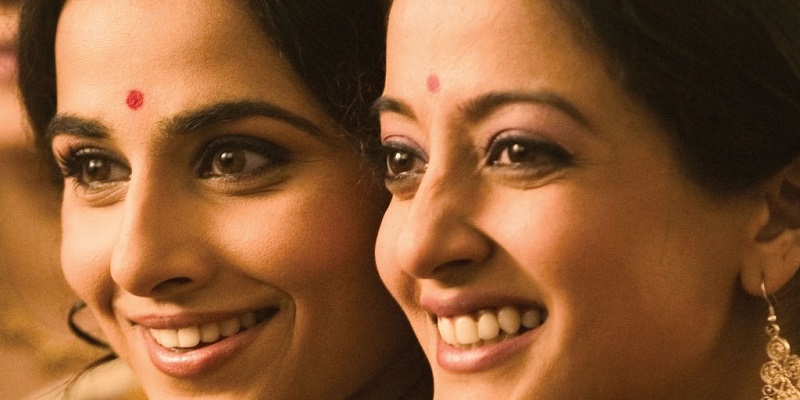Today, Raman Singh was sworn in as Chhatisgarh’s Chief Minister straight for the third time. Singh has now joined the elite club of BJP chief ministers who have scored hat-tricks in their respective states.
Little was known about a minister of state in Atal Bihari Vajpayee government who was moved to Raipur for creating success for the party in newly formed Chhatisgarh. But Raman Singh led BJP to a glorious victory in 2003 assembly elections. Many thought that he lacked a popular support base and his victory was only due to luck. But they were proven wrong time and again.
Today, Raman Singh was sworn in as Chhatisgarh’s Chief Minister straight for the third time. Singh has now joined the elite club of BJP chief ministers who have scored hat-tricks in their respective states.
61-year-old Singh was administered the oath of office and secrecy by Governor Shekhar Dutt during a grand swearing-in ceremony at the Police Parade Ground where tight security arrangements were put in place. Posters, banners and pamphlet carrying Singh’s photo were put on almost all the roads and market areas across the city.
The oath-taking ceremony was star studded. Every BJP leader was present at the ceremony including main rival Congress leader Ajit Jogi.
Singh is a sober and accessible politician who has ruled the hearts and minds of many in Chhattisgarh. One of his biggest success was unveiling a food security act in 2008 that ensured basic food to 60 percent of the population. Rice for Rs 1 a kg under the Antyodaya scheme and at Rs 2 for others below the poverty line (BPL) families were touted as one of the main achievements of the Raman Singh government which also earned him the sobriquet ‘Chawal wale Baba’. The policy was not only researched and adopted by UPA government but also launched at national level as national food security scheme and taken credit of.
His women-friendly and –favouring policies earned him more votes. The record turnout saw women voting more enthusiastically which is a direct result of state government policies. Women benefitted greatly from the distribution of new and revised ration cards, where their names appeared as the head of the family. In 55 out of the 90 seats, women voted more than the men; in 44 seats over 80 percent votes were cast. Most of these seats have gone to BJP.
He took a 6,000-km plus ‘Vikas Yatra’ covering all 90 constituencies making a direct public contact. That is the reason that even when several of his ministers – almost half the cabinet – have lost, he retained power through new faces because the voters placed their trust in him.
There was a great sympathy wave for Congress in the state due to repeated Maoist attacks on its leaders. At that time, even BJP was doubtful of pulling it through Raman Singh’s credentials alone because he had created ‘Salwa Judum’ — an anti-Naxal movement, to check Left-wing extremism in the state– which was decried by human rights activists.
He had blunted criticism over his failure to check the Maoists by saying that the rebels were a national problem, not Chhattisgarh’s headache alone. He won praise from political rivals including Finance Minister P Chidambaram (during his tenure as Home Minister) for adopting pro-active policy to tackle Naxalism.
As a result, the star leader Narendra Modi was launched in the field who attended more meetings in the area than planned. But Mod kept Raman Singh’s achievement on the fore in all these rallies.
Singh retained his Rajnandgaon Assembly constituency by defeating Congress’ candidate Alka Mudliyar, the wife of former Congress MLA Uday Mudliyar who was killed in the Darbha naxal attack in May this year, by a margin of 35,866 votes.
BJP registered a thumping victory by winning 49 of the 90 seats, one less than its 2008 tally. Congress could bag 39 seats in the 90-member Assembly while the rest of the two seats went to BSP and an Independent each.
The BJP had gone into the election with the slogan “fir Raman, fir Kamal” and had hoped to clinch an easy win riding on Raman Singh’s success. And Singh, no doubt, has delivered.





